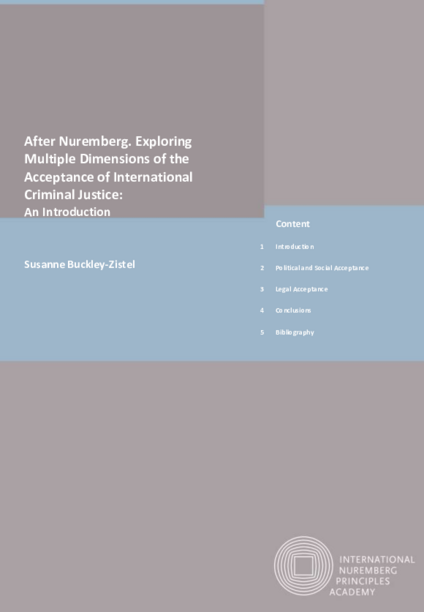After Nuremberg. Exploring Multiple Dimensions of the Acceptance of International Criminal Justice: An Introduction

About
Following the Second World War, a number of Germans responsible for heinous crimes were brought to court in Nuremberg. In total, 22 people were tried by judges from the Allied powers who presided over the hearings: Great Britain, France, the United States and the Soviet Union. The Nuremberg trials were the first time that justice was rendered by actors from outside a country for crimes committed by officials from within that country. In other words, Nuremberg was the first case of the application of international criminal justice in a situation country; in fact, it led to the development of the very norms - the Nuremberg Principles - on which international criminal justice is based today. Even though this form of justice was initially appreciated or at least accepted by large parts of the population, sentiments changed over time as an increasing number of Germans were directly or indirectly affected by external transitional justice measures. Nuremberg thus presents an interesting case study of whether and, if so, how international criminal justice is accepted in a situation country.
